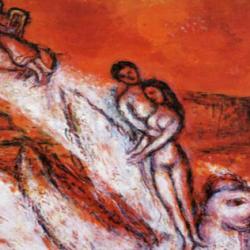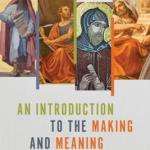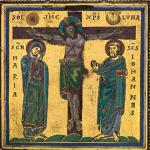Yael Klangwisan’s Earthing the Cosmic Queen offers a couple of distinct theoretical frameworks for interpreting the Song of Songs. The first is summarized by the acronym “Pardes,” Paradise, which occurs at Song 4:13. Drawing from rabbinic hermeneutics, she proposes to read the text as it stands (Peshat), to trace its echoes and cues (Remez), to read the text in context (Derasha), and to find the secret of the text (Sohd). Earthing the Cosmic Queen discusses the first three layers, and Klangwisan promises another book to deal with the last.
Klangwisan intends to fill out this rabbinic frame with Relevance Theory. According to Relevance Theory, “communication . . . is earthed in actual contexts. A communication event . . . is birthed from the communicators engagement, on the basis of the communicator’s unique and shared environments, with other contextual environments which produce conflict or resonance” (xxii). An important point to pursue in some contexts, but, other than providing a contemporary theoretical gloss to the proceedings, it’s not clear to me how Relevance Theory does much for the interpretation offered in the book. It’s unfortunate, I think, that Klangwisan spends so much time on theory.
Her lengthy section on discourse analysis/Peshat contains some nuggets. She notices that the Beloved has brothers but no father, and speculates on the effects of this situation on the poem. She recognizes the force of the imagery that compares the bride to a military camp: “Her beauty confuses, overwhelms and terrifies” (63). And she also notices the heroic qualities of the Beloved: “She, with no defence, goes into the night. . . . This woman . . . is fearless when she loves” (78; perfect love casts out fear!). The “heroine” is “a warrior queen (7:4)” who is “strong and brave, fearless, resolute. . . Her qualities are compared to the fearless men of old, armied and established in a stone fortress. . . . She carries no sword and no shield . . . she is braver than the warriors who holy swords to their sides ‘against the fears of the night’” (121).
Klangwisan sees a progress in the wasf poems, “from natural, to agricultural, to military/royal” (66). The Beloved is liberated in the poem, but I think Klangwisan goes to far in saying “she rejects all societal and personal constraints” (102).
The Song is usually read as a celebration of sexual pleasure, of consequenceless eros. One of the strengths of this book is Klangwisan’s discussion of the mother theme: “the concept of mother plays an important role that shapes meaning in the Song. The mother shares a special relationship with the heroine, her home or room (perhaps womb) being implied. . . Focus on the mother’s ability to birth is the substance of two references. Both the hero and heroine owe their awakening to life to their birthing mothers.” She points to the repeated references to “mother” at the climax of the poem (8:1-5). She also notes that “various terms of pregnancy and birth are used” in 3:4; 6:9; 8:2; 8:5 (109-110).
Her shorter final chapter, combining Deresha and Remez is the best part of the book. Like most commentators, she notices the Edenic background of the poem’s garden imagery. Unlike most, she also sees that the woman becomes the garden and that the temple provides much of the imagery of the poem. The hero is a new Adam, but he is a better Adam, made a precious jewels instead of dust, set up as the image in the cosmic house of the Creator. She sees the dynamic of the poem as a struggle of two to become one flesh, to realize in this post-Edenic world the harmony of Eden.
Klangwisan claims that the poem ends with the heroine alone in her vineyard. She has been liberated from brothers, and now “alone with God,” like Adam before Eve’s creation (136). That may be, but still it is not good to be alone, even for a heroic Beloved. She may be alone, but she recognizes her loneness as a state from from ideal, for she ends with a final cry: “Hurry, my beloved. And be like a gazelle or a young stag on the mountains of spices” (8:14).















